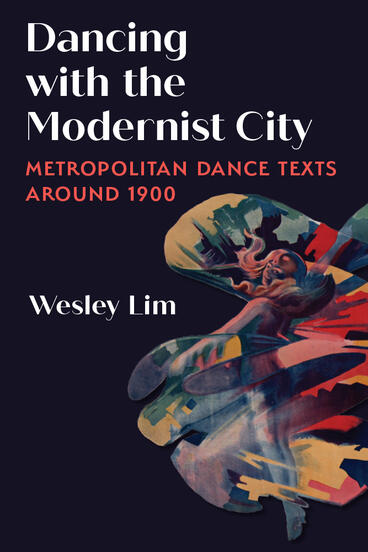Dancing with the Modernist City
Metropolitan Dance Texts around 1900
Combining urban experiences and modern dance to develop metropolitan dance texts
Description
As the 20th century dawned, authors, artists, and filmmakers flocked to cities like Paris and Berlin for a chance to experience a bustling urban life and engage with other artists and intellectuals. Among them were German-speaking authors and filmmakers such as Harry Graf Kessler, Rainer Maria Rilke, August Endell, Alfred Döblin, Else Lasker-Schüler, Segundo de Chomón, and the brothers Max and Emil Skladanowsky. In their writing and artistic work from that period, they depicted the perpetual influx of stimuli caused by urban life—including hordes of pedestrians, bustling traffic, and a barrage of advertisements—as well as how these encounters repeatedly paralleled their experiences of watching early twentieth-century dance performances by Loïe Fuller, Ruth St. Denis, and Vaslav Nijinsky. The convergence these writers and filmmakers saw between the unexpected encounters during their urban strolls and modern dance performances led to writings that interwove the two motifs.
Drawing on cultural, literary, dance, performance, and queer studies, Dancing with the Modernist City analyzes an array of material from 1896 to 1914—essays, novels, short stories, poetry, newspaper articles, photographs, posters, drawings, and early film. It argues that these writers and artists created a genre called the metropolitan dance text, which depicts dancing figures not on a traditional stage, but with the streets, advertising pillars, theaters, cafes, squares, and hospitals of an urban setting. Breaking away from the historically male, heteronormative view, this posthumanist mode of writing highlights the visual and episodic unexpectedness of urban encounters. These literary depictions question traditional conceptualizations of space and performance by making the protagonist and the reader feel like they embody the dancer and the movement. In doing so, they upset conventional depictions of performance and urban spaces in ways paralleling modern dance.
Wesley Lim is Lecturer in German Studies at the Australian National University.
Reviews
“Dancing with the Modernist City addresses an original topic that is illuminating in terms of the exploration of modernity within the urban context and as a literary phenomenon. The selection of writers who engage with ‘dance-texts’ is compelling in terms of scope, but also in light of their importance for German literature.”
- Ulrike Zitzlsperger, University of Exeter
—Ulrike Zitzlsperger, University of Exeter
“Dancing with the Modernist City is a fascinating book that will invigorate turn of the 20th century scholarship in dance studies and urban studies and will be useful in a variety of undergraduate and graduate courses.”
- Ann Cooper Albright, Oberlin College & Conservatory
—Ann Cooper Albright, Oberlin College & Conservatory
“Lim provides an exciting new view on modernism in dance by reading the city as a dancing entity. Tracing the dynamics of European metropolitan cityscapes—Berlin, Paris, and Vienna—the book shows the intertwining of modernism in the arts and the impact of the urban life agency. A brilliant analysis of well-known and lesser-known German-speaking authors and the intersections of dance, literature, and film. This volume, thoroughly researched and full of unknown facts and fascinating details, will be inspiring for expert readers, as well as for professionals and students in dance, performing arts, literature, and comparative art studies.”
- Gabriele Brandstetter, Freie Universität Berlin
—Gabriele Brandstetter, Freie Universität Berlin

